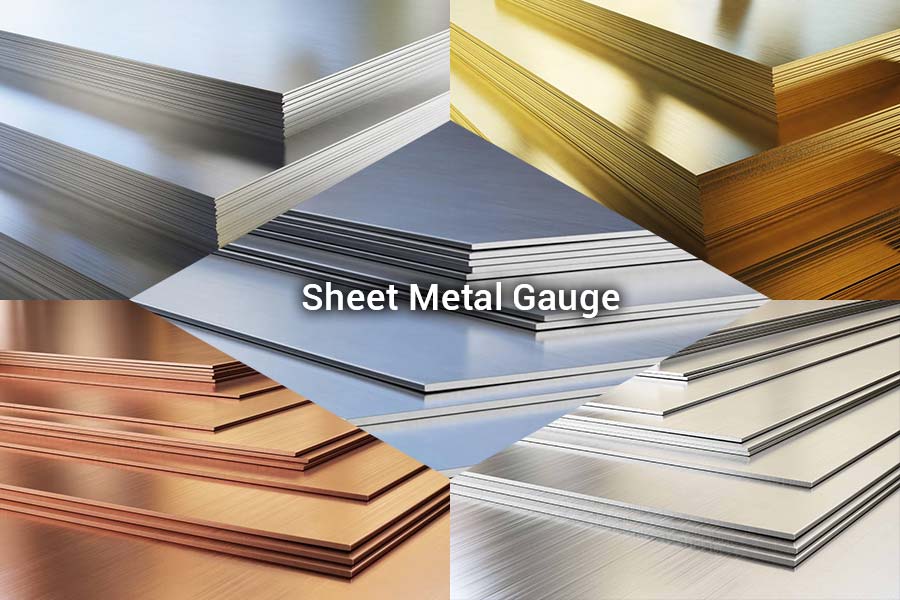When working with sheet metal in manufacturing and fabrication, understanding gauge sizes is essential.
Whether you’re designing components for automotive, aerospace, or household items, selecting the correct sheet metal gauge can affect the strength, flexibility, and durability of the final product.
This article will explore sheet metal gauge sizes, why they are important, and how to choose the right one for your project.
What is Sheet Metal Gauge?
The gauge system dates back to the 19th century and was originally developed by manufacturers in the United States. It is now widely used across industries.
The term “gauge” refers to the thickness of a metal sheet, and it is a standard measurement used in sheet metal fabrication. Gauge sizes are used to indicate how thick or thin a metal sheet is.
While the term “gauge” can be a bit confusing, as it seems to be a number, it is inversely related to the thickness. This means the lower the gauge number, the thicker the metal. Conversely, higher gauge numbers indicate thinner metal sheets.
Why is Gauge Important?
The gauge of sheet metal is important because it directly influences the material’s strength, weight, flexibility, and resistance to external forces such as pressure, heat, and corrosion.
1. Strength and Durability
The thickness of the metal affects its ability to resist external forces such as pressure, heat, and wear. Thicker gauges tend to be stronger and more durable, while thinner gauges are lighter and more flexible. For example, a thick gauge of steel is commonly used for structural components like beams and supports, while thinner gauges might be used for components that need to be flexible or lightweight.
2. Weight
The gauge of sheet metal is closely related to its weight. Heavier materials are typically chosen for applications that demand greater strength and durability, such as in the automotive and industrial sectors. Thinner gauges are preferable when weight is a concern, such as in aerospace and consumer electronics, where reducing mass is crucial.
3. Cost-Effectiveness
Gauges of metal can also affect material costs. Thicker metals generally cost more due to their increased raw material volume and processing requirements. Depending on the specifics of your project, achieving the right balance between performance and cost may be essential.
4. Workability
Thinner gauges are easier to work with when it comes to processes like metal bending, metal welding, and forming. They are also more versatile when used for items like ducts, panels, or small parts. On the other hand, thicker gauges often require more power and specialized machinery for fabrication.
Gauge Measurement System
In the United States, sheet metal gauge sizes are typically based on two different systems: the Standard Steel Gauge (SSG) and the American Steel Gauge (ASG). Standard Steel SSG is the most common gauge system used in the U.S.
For non-ferrous metals such as aluminum, copper, and brass, the gauge sizes may differ slightly because of their different densities and properties. The gauge system’s historical roots lie in the metalworking industry, where different manufacturing techniques were used to create sheets of various thicknesses. As a result, the system became standardized to ensure uniformity in material sizing and to simplify purchasing and manufacturing processes.
Understanding Gauge in Different Metal Materials
While gauge is an important measure for metal thickness, the actual thickness of a sheet will vary based on the type of metal being used.
Here is an overview of how gauge differs between common metals like mild steel, stainless steel, aluminum, copper, and brass.
Keep in mind that the actual thickness may vary slightly depending on the manufacturer, but this chart gives you a good reference:
Mild Steel Gauge

Mild steel (also called carbon steel) is the most common material for sheet metal, and its gauge measurement follows the Standard Steel Gauge system (SSG), which means thicker gauges correspond to lower gauge numbers. For example, a 10-gauge sheet of mild steel is much thicker than a 20-gauge sheet.
Gauge | Thickness (inches) | Thickness (mm) |
3 | 3 | 6.08 |
4 | 0.2242 | 5.69 |
5 | 0.2092 | 5.32 |
6 | 0.1942 | 4.93 |
7 | 0.1793 | 4.56 |
8 | 0.1644 | 4.18 |
9 | 0.1495 | 3.80 |
10 | 0.1345 | 3.42 |
11 | 0.1196 | 3.04 |
12 | 0.1046 | 2.66 |
13 | 0.0897 | 2.28 |
14 | 0.0747 | 1.90 |
15 | 0.0673 | 1.71 |
16 | 0.0598 | 1.52 |
17 | 0.0518 | 1.32 |
18 | 0.0448 | 1.14 |
19 | 0.0378 | 0.96 |
20 | 0.0320 | 0.81 |
22 | 0.0250 | 0.64 |
24 | 0.0200 | 0.51 |
26 | 0.0150 | 0.38 |
Stainless Steel Gauge
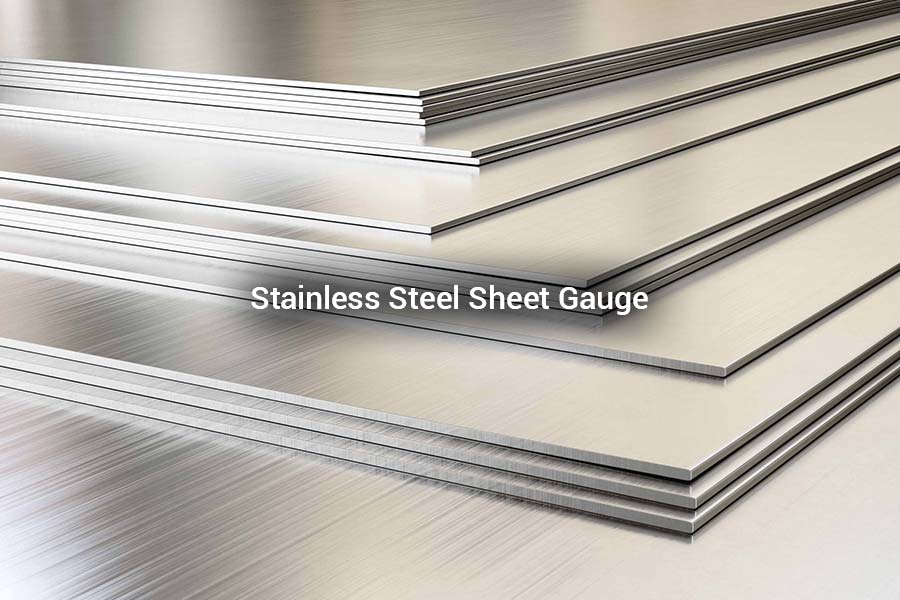
Stainless steel, due to its higher strength and corrosion resistance, typically uses a different measurement system for its gauges. However, in the U.S., the Standard Steel Gauge system can still be applied, meaning the same gauge number will correspond to a thinner material compared to mild steel. For instance, a 12-gauge stainless steel sheet is thinner than a 12-gauge mild steel sheet.
Gauge | Thickness (inches) | Thickness (mm) |
10 | 0.1345 | 3.43 |
11 | 0.1200 | 3.05 |
12 | 0.1050 | 2.67 |
13 | 0.0900 | 2.29 |
14 | 0.0781 | 1.98 |
15 | 0.0700 | 1.78 |
16 | 0.0600 | 1.52 |
17 | 0.0538 | 1.37 |
18 | 0.0478 | 1.21 |
19 | 0.0418 | 1.06 |
20 | 0.0359 | 0.91 |
21 | 0.0329 | 0.84 |
22 | 0.0299 | 0.76 |
23 | 0.0259 | 0.66 |
24 | 0.0229 | 0.58 |
25 | 0.0209 | 0.53 |
26 | 0.0189 | 0.48 |
27 | 0.0169 | 0.43 |
28 | 0.0149 | 0.38 |
29 | 0.0139 | 0.35 |
30 | 0.0129 | 0.33 |
Aluminum Gauge
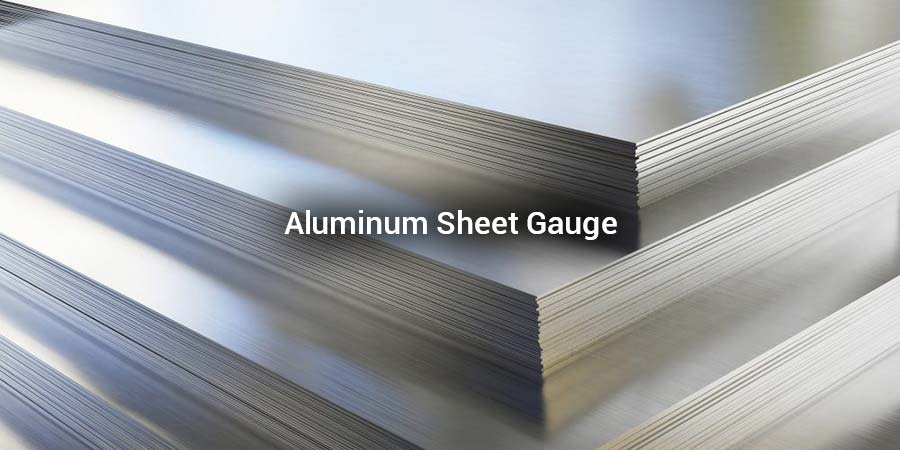
Aluminum is a lightweight material commonly used in applications like aircraft manufacturing, automotive parts, and household appliances. Aluminum gauge sizes range widely, but gauges such as 16, 18, and 20 are quite common. Due to aluminum’s lower density, it is typically available in thinner gauges compared to mild or stainless steel.
Gauge | Thickness (inches) | Thickness (mm) |
3 | 0.2391 | 6.07 |
4 | 0.2242 | 5.69 |
5 | 0.2092 | 5.32 |
6 | 0.1943 | 4.94 |
7 | 0.1793 | 4.56 |
8 | 0.1644 | 4.18 |
9 | 0.1495 | 3.80 |
10 | 0.1345 | 3.42 |
11 | 0.1196 | 3.04 |
12 | 0.1046 | 2.66 |
13 | 0.0897 | 2.28 |
14 | 0.0747 | 1.90 |
15 | 0.0678 | 1.72 |
16 | 0.0598 | 1.52 |
17 | 0.0530 | 1.35 |
18 | 0.0470 | 1.19 |
19 | 0.0419 | 1.07 |
20 | 0.0359 | 0.91 |
Copper Gauge
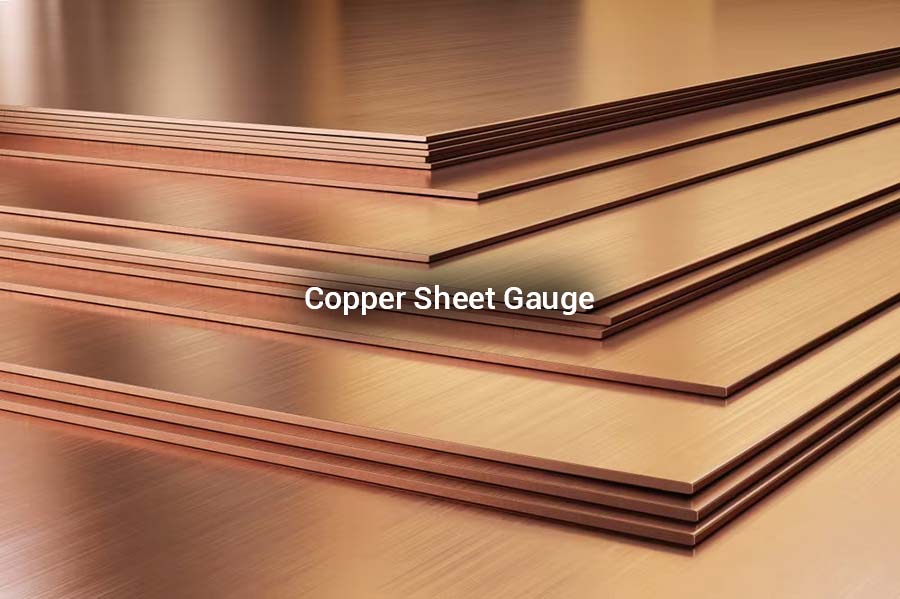
Copper sheet metal is often used in roofing, electrical work, and plumbing. Copper is denser than aluminum but softer than steel. Copper gauge sizes are similar to those of aluminum but tend to be more rigid, making them suitable for tasks requiring precision.
Gauge | Thickness (inches) | Thickness (mm) |
8 | 0.1700 | 4.32 |
10 | 0.1400 | 3.56 |
12 | 0.1050 | 2.67 |
14 | 0.0781 | 1.98 |
16 | 0.0625 | 1.59 |
18 | 0.0478 | 1.21 |
20 | 0.0359 | 0.91 |
22 | 0.0281 | 0.71 |
24 | 0.0224 | 0.57 |
26 | 0.0179 | 0.46 |
28 | 0.0149 | 0.38 |
Brass Gauge
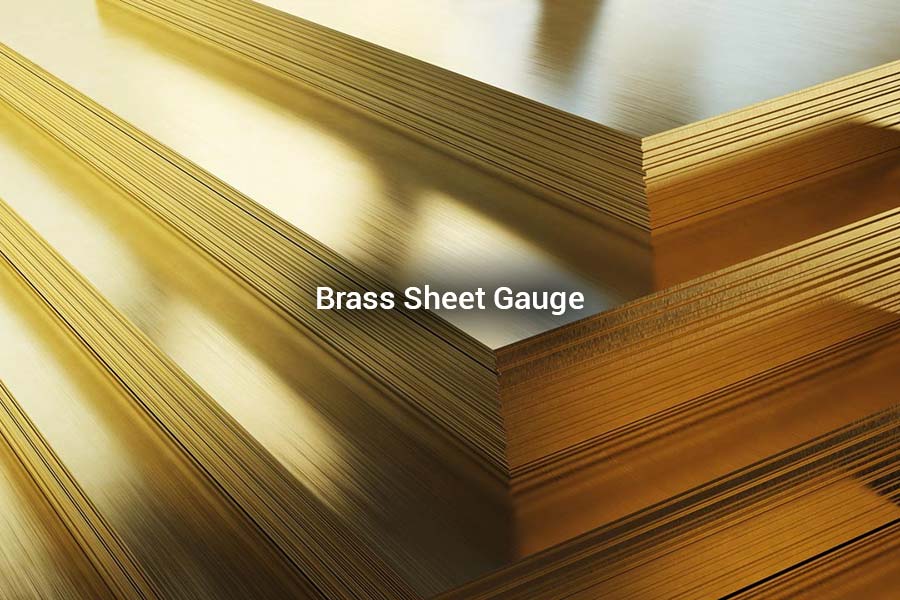
Brass is a mix of copper and zinc, known for its decorative properties. Brass gauge sizes often range from 16 to 24, with common uses in applications like jewelry, musical instruments, and architectural elements.
Gauge | Thickness (inches) | Thickness (mm) |
8 | 0.164 | 4.17 |
10 | 0.134 | 3.40 |
12 | 0.105 | 2.67 |
14 | 0.078 | 1.98 |
16 | 0.060 | 1.52 |
18 | 0.048 | 1.22 |
20 | 0.035 | 0.89 |
22 | 0.030 | 0.76 |
24 | 0.020 | 0.51 |
26 | 0.015 | 0.38 |
Choosing the Right Gauge for Your Project
When choosing the appropriate sheet metal gauge for a project, consider the following factors:
- Strength Requirements: Thicker gauges provide greater strength and are suitable for applications that will experience heavy stress or load.
- Weight Considerations: If weight is a concern, such as in automotive or aerospace projects, choose thinner gauges to reduce the overall mass.
- Workability: Thicker gauges may be harder to form and cut, requiring more sophisticated equipment and expertise.
- Corrosion Resistance: Certain metals (e.g., stainless steel, aluminum) offer better corrosion resistance, allowing for a wider range of applications.
- Cost: Thicker metals tend to be more expensive, so consider the balance between cost and performance.
By carefully considering these factors, you can select the optimal gauge size for your sheet metal project, ensuring it meets both functional and aesthetic requirements.

